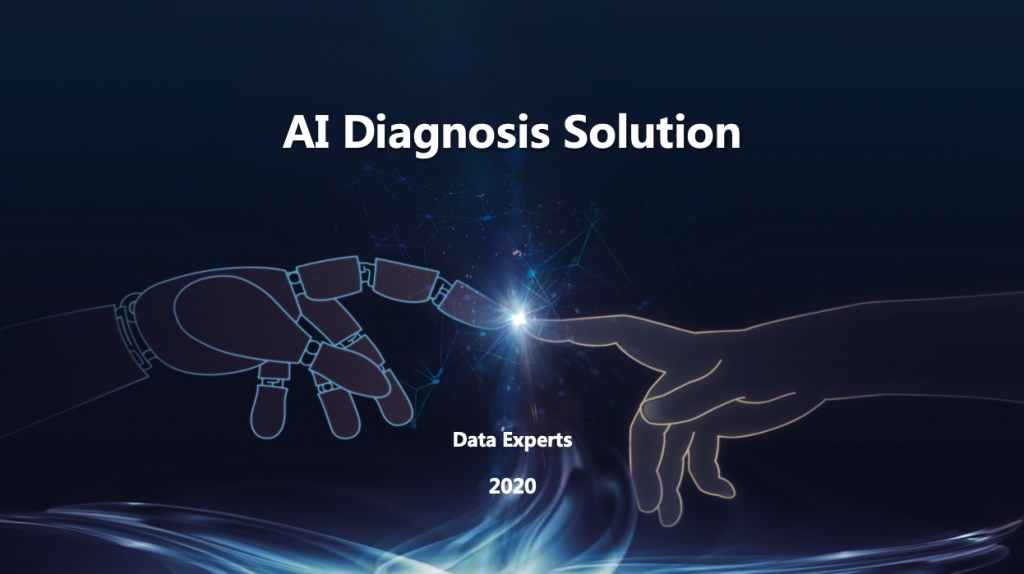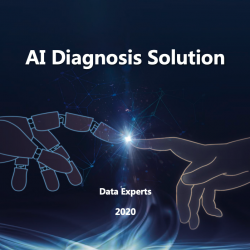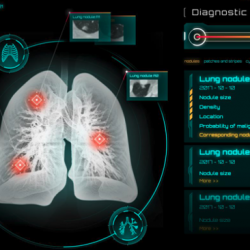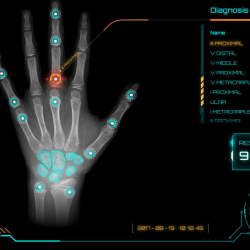Automatic medical diagnostics supported by artificial intelligence algorithms
Description:
Product use
- Quantification of lung infection. Given that doctors’ time is limited, traditional manual quantification takes at least 2-3 hours. Typically, doctors make a qualitative analysis rather than a quantitative evaluation. The AI system can perform automatic detection and perform quantification in 2-3 seconds, which enables precise treatment and greatly increases its effectiveness.
- Assessment of the severity of pneumonia along: mild, moderate, critical. The software can identify the radiological symptoms of infectious lung injury, such as the image of the milk glass, pleural effusion, etc
- Comparing the current CT scan results of one patient with his historical CT scan to verify changes in pneumonia. This is a function desired by doctors. Typically, a patient with COVID-19 or any other type of pneumonia must have a CT scan every 3-4 days. This feature can help your doctor decide if the current treatment plan is appropriate for the patient.
- Comprehensive chest examination (including screening for lung cancer) – the system is able to identify most of the most common lung lesions, including nodules, pathological masses, and then, based on the obtained clinical data, analyze the probability of the presence of a malignant lesion. The software is also able to identify and analyze bone changes – fractures, bone tumors;
- Mammography examination – the software is able to determine the type of gland, identify damage, accurately identify pathological masses, calcifications, disorders of the gland structure. Identified irregularities can be classified according to the BI-RADS scale;
- Testing the biological age of a child based on the assessment of bone maturation.
What can we detect
With the help of the software, on the basis of tomographic images, it is possible to detect and differentiate changes in the lungs. The information obtained supports doctors in the diagnosis and assessment of the dynamics of changes during the treatment process.
How does this software work
The software connects directly to the tomograph or PACS system. Upon completion of the examination, the tomograph or PACS system sends the images to the AI system. After receiving the images, the system automatically starts the analysis and diagnosis. Typically, one CT scan of an adult patient contains 300 to 500 images. The advantage of the solution used is the large number of lung images that were used during the development of artificial intelligence algorithms. The artificial intelligence algorithms themselves, without an adequate amount of source data, are ineffective and their practical value is negligible. It is worth emphasizing that in the case of the described solution, over a million images of lungs were used in the development of artificial intelligence algorithms, which results in the high efficiency of the solution.
How quickly we get the result and how accurate it is
If we are talking about the time taken by the AI algorithms (analysis, result) for all CT images for one patient (300-500), it takes 2-3 seconds. If the results along with the images must be sent to a workstation on the hospital network, it depends on the bandwidth of the network itself, but it takes no more than 2 minutes. The accuracy of the results, according to the information obtained from the manufacturer, is at the level of 98%.
How many results per day can the software analyze
In the case of the described solution, no “bottleneck” in terms of analytical capabilities has been noticed so far. The pneumonia assessment system has been implemented in over 200 hospitals around the world, the highest number of CT scans during the Covid-19 epidemic is 2000 patients per day and the AI system is able to process this number. As mentioned earlier, if a physician wants to quantify lung lesions, they must use the traditional manual ROI method and it will take several hours to complete.
Whether a specialist is required for operation
No IT expertise is required to operate the solution. The use of the software is intuitive and the presentation of the results is clear. The doctor’s support by an AI machine significantly improves the accuracy and speed of diagnostic imaging.







